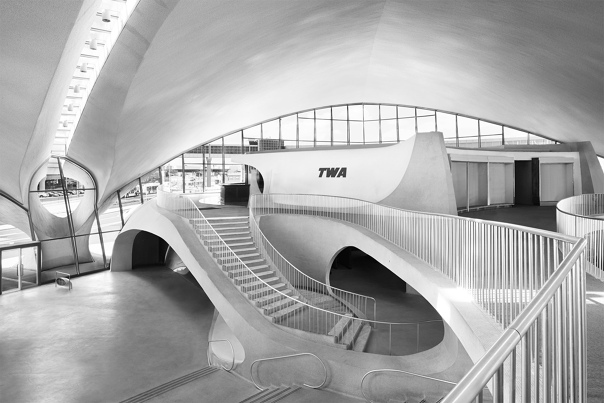Share This Article
When we think about architecture, we often imagine buildings with different materials—wood, concrete, glass, and metal—working together to create a visually stimulating and functional structure. But what if there was a design philosophy that aimed to use only one material for the entire project? This approach is called Monomateriality, and it’s gaining traction in the architectural world for its simplicity and elegance. Let’s break down what this term really means and why it’s important.
What is Monomateriality?
Monomateriality refers to a design approach where a single material is used throughout the construction of a building or object. Instead of mixing various materials like brick, glass, and wood, this concept focuses on using one material exclusively. This could be anything from concrete, timber, or even steel. The goal is to simplify the design and aesthetic by limiting the variety of materials, which leads to a cleaner, more cohesive look.
While this may seem like a minimalist approach, it’s not just about simplicity; it’s also about embracing the material’s inherent qualities—whether that be strength, texture, or sustainability—and allowing it to dictate the form and function of the space.

The Benefits of Monomateriality
- Aesthetic Unity: Using a single material helps to create visual harmony. There’s no clash between materials, and the design flows seamlessly from one element to the next. This often results in a strikingly minimalist and modern look.
- Sustainability: By reducing the number of materials, you can lower waste and create a more sustainable structure. It’s easier to recycle and repurpose a single material, reducing the environmental impact.
- Cost-Efficiency: Often, when fewer materials are used, the cost of sourcing and transporting different materials is reduced. This can also simplify the construction process, cutting down on labor and time.
- Durability: When only one material is used, the building becomes more uniform, which can increase its longevity. This is especially true for materials like concrete or steel, which can withstand harsh conditions over time.
- Maintenance: A structure made from one material often requires less maintenance, as the material’s wear and tear is consistent throughout the building.
Monomateriality in Practice
- Concrete: One of the most popular materials used in monomateriality is concrete. Its versatility, durability, and ability to shape various architectural forms make it ideal for minimalist designs. Examples like the Brutalist movement showcase how concrete can be used in large, impactful buildings without the need for other materials.
- Wood: Wood is another material that is increasingly being used in monomaterial designs. It brings warmth, texture, and sustainability to the table. Wood can be used for everything from structural elements to finishing details, making it perfect for both interiors and exteriors.
- Steel: Steel is often employed in monomaterial designs, especially in modern or industrial structures. Its strength, sleek finish, and ability to allow for vast open spaces with minimal support make it a popular choice in contemporary architecture.
Examples of Monomaterial Architecture
- Vitra Design Museum, Germany (Design by Frank Gehry): This museum uses a single material—concrete—to create an impressive structure that’s both bold and simple. The design allows for flowing spaces that make the most of concrete’s ability to form unique, organic shapes.


2. The MPavilion, Australia (Design by Amanda Levete): A temporary structure designed for Melbourne’s summer cultural festival, the pavilion is constructed primarily from a single material—aluminum. The choice of a single material highlights its beauty and flexibility while still creating an inviting, functional public space.

3. The Seattle Central Library, USA (Design by Rem Koolhaas): While not entirely monomaterial, the library uses extensive glass walls to unify the building’s form. The structure’s simple use of glass creates a transparent, airy space that offers both aesthetic and functional qualities.

How Monomateriality Challenges Traditional Design
Traditionally, architects have used various materials to meet the functional and aesthetic needs of a building. Each material was chosen for its specific purpose: wood for warmth, glass for light, metal for strength, and so on. However, monomateriality challenges this by stripping away the complexity of material choice. Instead, architects are forced to rethink design concepts and consider how one material can fulfill multiple needs.
The result? Structures that are more sustainable, cost-efficient, and unique, showcasing a modern, streamlined approach to architecture.
Also Read – What Is Landscape Architecture? Exploring the Art of Designing with Nature
Is Monomateriality Right for Every Project?
While monomateriality offers many benefits, it isn’t always the best fit for every architectural project. Some designs require a variety of materials to fulfill different functional or aesthetic requirements. Additionally, certain materials may not be feasible for all building types, especially in areas with extreme weather conditions or where durability is a major concern.
Monomateriality works best in modern, minimalist designs, where the beauty of simplicity is the main focus. It’s especially ideal for buildings meant to showcase innovation or sustainability.
Conclusion
Monomateriality is more than just a trend in architecture—it’s a thought process that prioritizes simplicity, functionality, and sustainability. By embracing the use of one material throughout a building’s design, architects are able to create cohesive, harmonious spaces that stand the test of time. Whether using concrete, wood, or steel, the power of monomaterial design lies in its ability to transform a single material into something far greater than the sum of its parts.
In the future, we may see even more buildings adopting this approach, as sustainability and efficiency become even more vital in our quest for better-designed, eco-friendly cities. Monomateriality, with its commitment to simplicity and ingenuity, holds the potential to redefine how we build, live, and experience the spaces around us.
